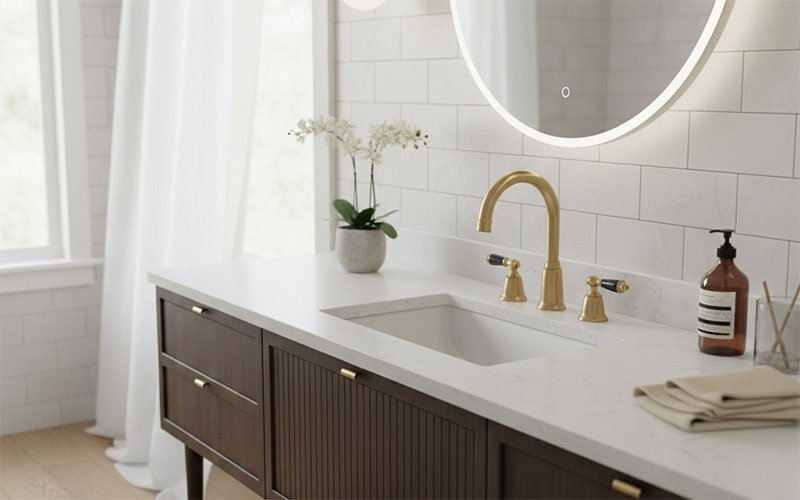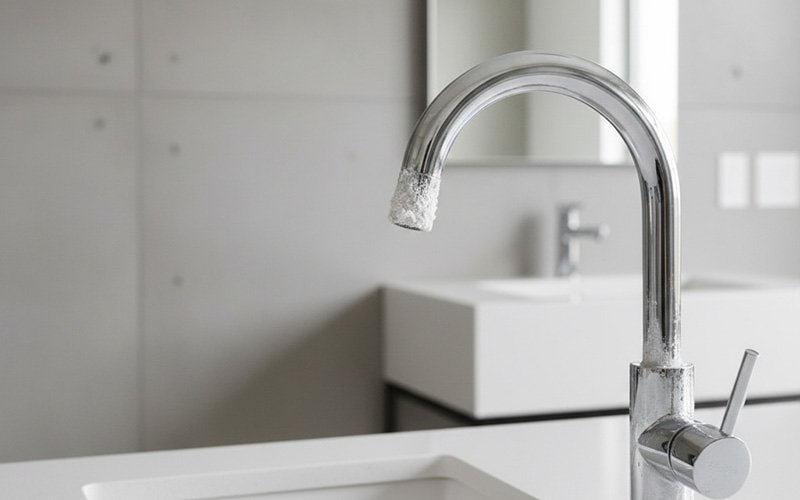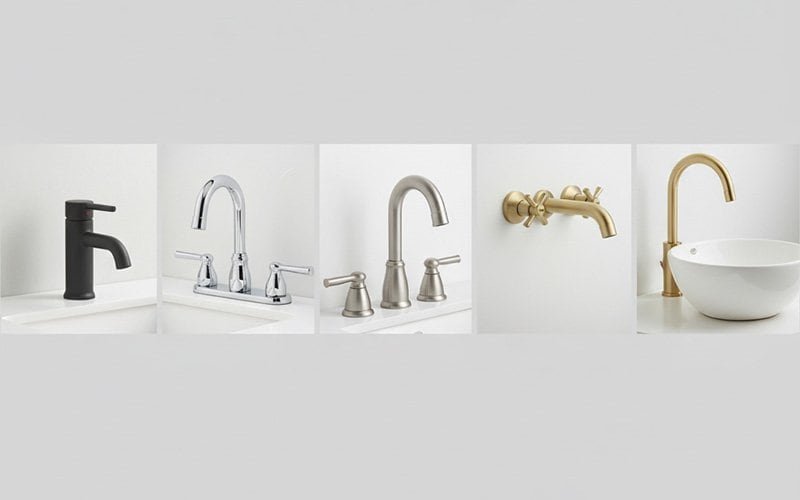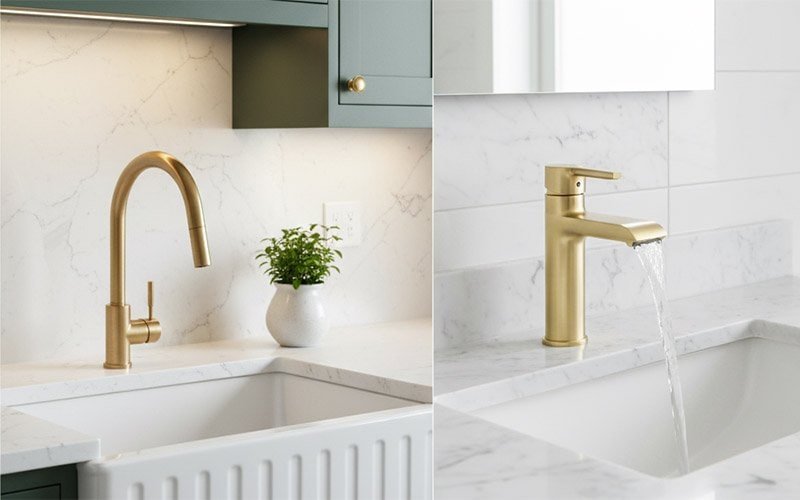Table of Content
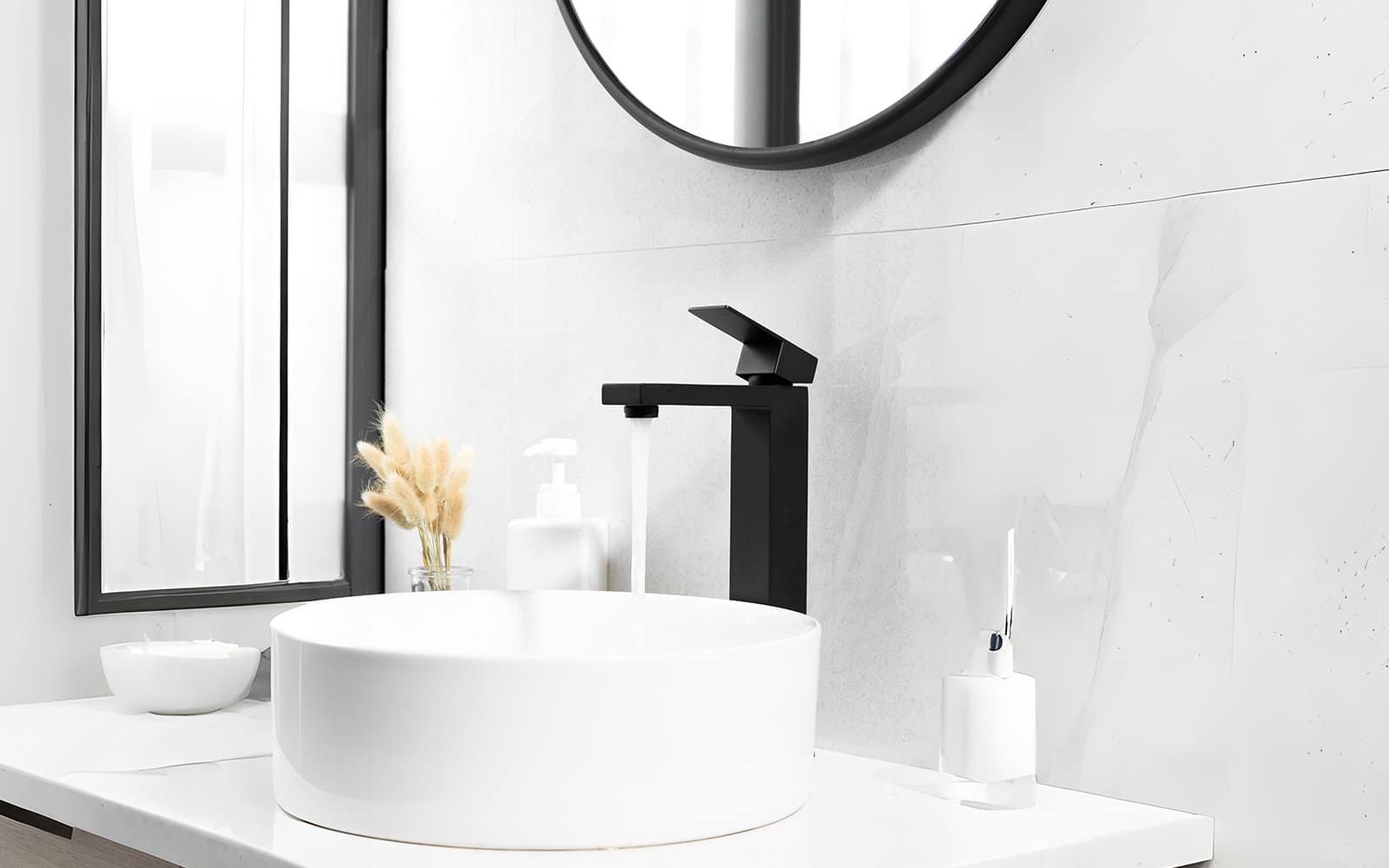
Disclaimer:
This guide is for general informational purposes only. Information regarding regulations and standards is subject to change and may vary by location. This content does not constitute professional plumbing or legal advice. For any specific installations, modifications, or to ensure compliance with local codes, we strongly recommend consulting a licensed professional plumber.
Faucets are essential fixtures in any home, but have you ever considered the importance of their flow rate? Faucet flow rate is more than just a number—it affects your water consumption and the overall user experience in your kitchen and bathroom.
In this post, we’ll dive deep into what water flow rate is, the terminology used to describe it, how it impacts your daily life, and practical tips to measure and adjust it at home.
What is Faucet Flow Rate?
Faucet flow rate refers to the volume of water that flows out of your faucet over a specific period, usually measured in gallons per minute (GPM) or liters per minute (L/min). It is a critical factor in ensuring that your faucet provides adequate water pressure while also promoting water conservation.
Key Terminology and Measurement Units
Understanding faucet flow rate starts with familiarizing yourself with some common terms and units:
- GPM (Gallons Per Minute):
This unit indicates the volume of water delivered in one minute. It is the most common measurement in the United States for assessing faucet performance. - L/min (Liters Per Minute):
Used primarily in countries that employ the metric system, this is the equivalent measurement to GPM. - PSI (Pounds Per Square Inch):
While not a direct measure of flow rate, PSI indicates the water pressure in your plumbing system. Adequate water pressure is essential for maintaining a consistent flow rate. - Aerator:
An aerator is a small device attached to the end of a faucet. It mixes air with water, which can help reduce water usage and minimize splashing. Aerators are designed to provide a full-feeling stream of water even at a lower effective flow rate.
Why is Faucet Flow Rate Important?
Water Conservation and Utility Costs
A faucet with a high flow rate can lead to significant water waste, especially if left running. Conversely, a very low flow rate might not meet your daily needs effectively. Balancing water flow is key to managing water consumption and supporting environmental sustainability.
Performance and User Experience
The right flow rate ensures that you have sufficient water pressure for tasks like rinsing dishes, washing hands, or filling a sink. If the flow is too high, it might lead to splashing and wasted water; too low, and you might face frustration with insufficient water for tasks.
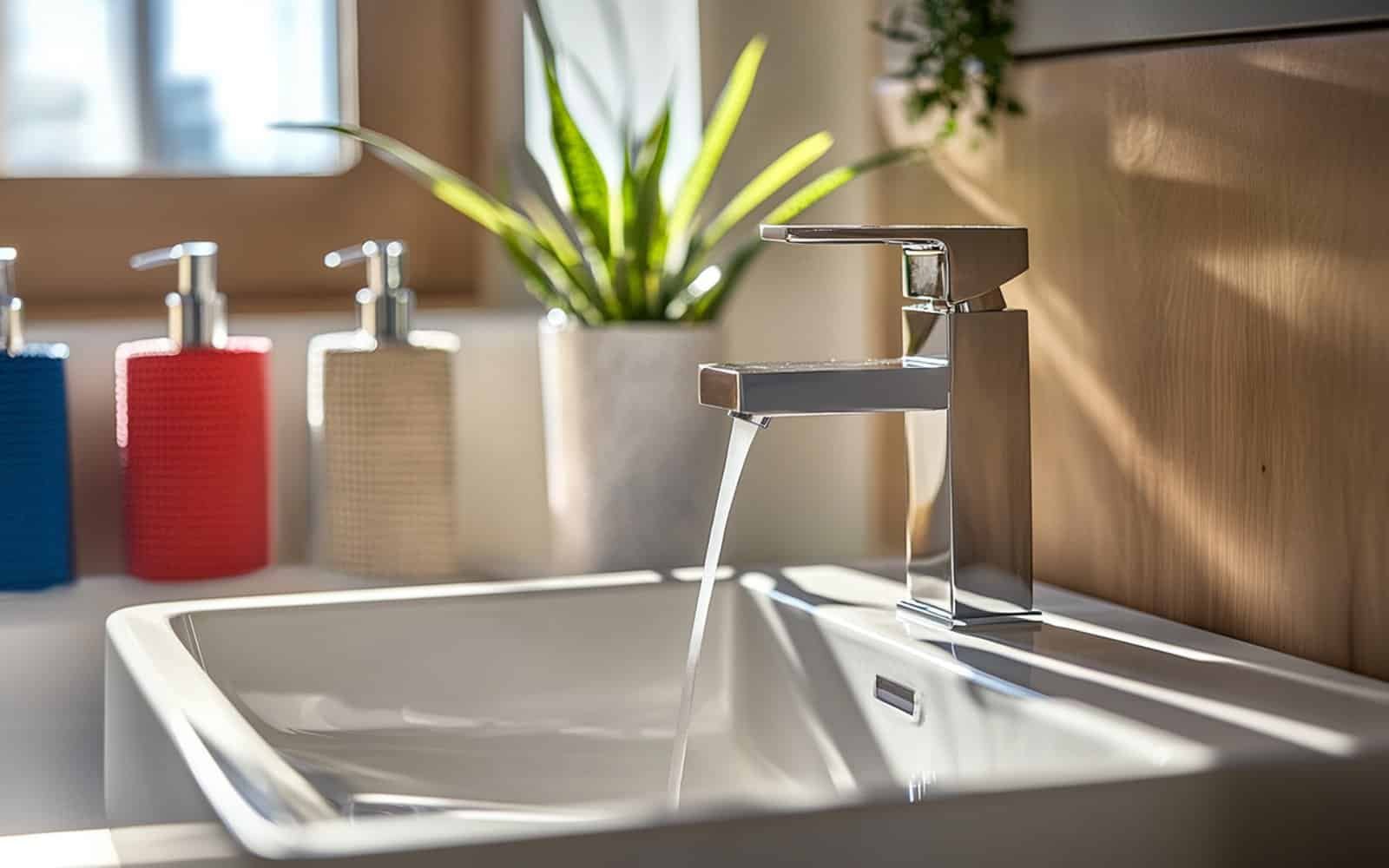
Typical Flow Rates for Kitchen and Bathroom Faucets
- Kitchen Faucets:
In the United States, modern kitchen faucets typically range from 1.5 to 2.2 GPM. These rates are designed to provide adequate water flow for washing dishes and cooking while complying with water conservation standards. - Bathroom Faucets:
Bathroom faucets usually have lower flow rates, often around 1.0 to 1.5 GPM, to conserve water in sinks and showers.
How to Measure Your Home’s Faucet Flow Rate
Measuring your faucet’s flow rate» at home is a simple process:
- Prepare a Container:
Use a container of a known volume, such as a 1-gallon jug or a container with marked measurements. - Time the Flow:
Turn on your faucet fully and use a stopwatch to time how long it takes to fill the container completely. - Calculate the Flow Rate:
If it takes 30 seconds to fill a 1-gallon container, the flow rate is calculated as follows:

- Repeat for Accuracy:
Conduct the test several times to ensure accuracy and average the results.
Factors That Affect Faucet Flow Rate
Several factors can influence the water flow from your faucets:
Water Pressure (PSI)
Lower water pressure naturally reduces flow, whereas high pressure can increase it. However, extremely high pressure might lead to water wastage and splashing.
Faucet Design and Internal Valves
The design of the faucet and its internal components can restrict or facilitate water flow.
Aerators and Flow Restrictors
These devices are designed to limit water flow for conservation purposes. A clogged aerator, for instance, can significantly reduce flow rate.
Plumbing Conditions
Blockages, pipe scaling, or outdated plumbing can also impact the water flow delivered by your faucets.
How to Increase or Decrease Faucet Flow Rate
Depending on your needs, you might want to adjust your faucet’s flow rate:
To Increase Flow Rate:
- Remove or upgrade the aerator if it’s overly restrictive.
- Check and clean the faucet’s internal components to ensure no blockages are present.
- Verify that your home’s water pressure is within a functional range (often cited as 40-60 PSI for many households).
To Decrease Flow Rate:
- Install or replace existing aerators with models that include flow restrictors.
- Consider using faucet adapters that regulate water flow.
- Adjust your plumbing’s pressure regulator if water pressure is too high.
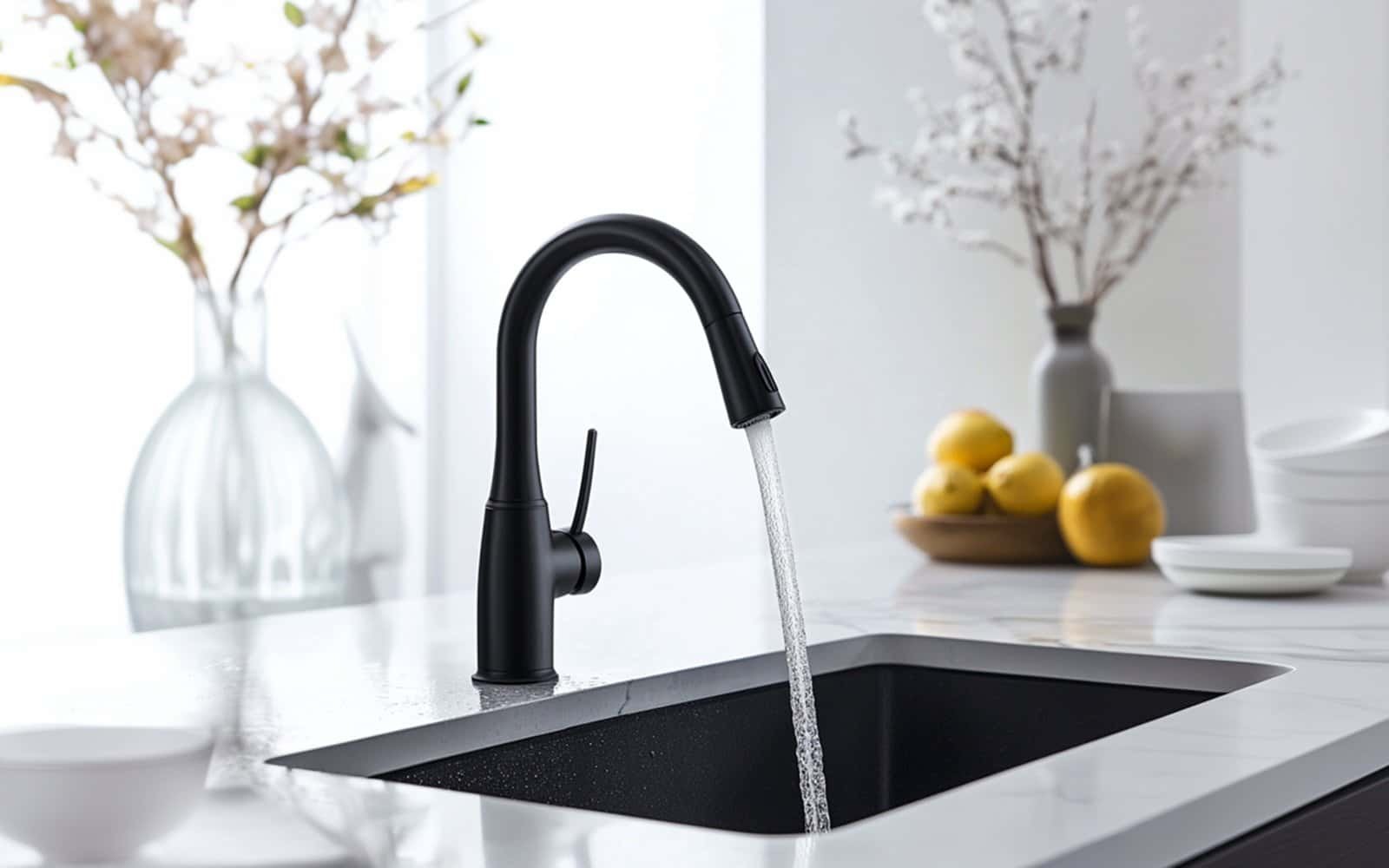
Government Regulations and Standards
Flow rates aren’t just a personal choice—they’re regulated to promote water conservation:
- Federal Standard:
Since the Energy Policy Act of 1992, the maximum flow rate for kitchen faucets in the U.S. was set at 2.2 GPM*at 60 PSI, and 2.2 GPM for bathroom faucets, for fixtures made after January 1, 1994. - State Variations:
States like California have implemented stricter standards, capping kitchen faucets at 1.8 GPM and private bathroom faucets at 1.2 GPM.. Public lavatory faucets may be limited to 0.5 GPM. - WaterSense Program:
The EPA’s voluntary WaterSense label certifies bathroom faucets that have a maximum flow rate of 1.5 GPM. According to the EPA, using WaterSense-labeled faucets can contribute to significant household water savings annually.
Other countries, particularly those in the European Union, have similar standards aimed at reducing water waste, although the specific metrics may vary. These regulations not only promote sustainability but also drive innovation in faucet technology.
Conclusion
Understanding faucet flow rate helps you manage water use, improve comfort, and meet regulations. Whether checking existing faucets or planning a new one, knowing typical flow rates, how to measure them, and what affects them lets you make informed choices. Optimizing flow can help manage water usage and support conservation efforts.
If this guide helped, feel free to share it! For more tips or personalized advice, just reach out.
FAQs
Related Posts



